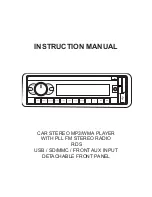
HONEYWELL
Aerospace Electronic Systems
Page 4
Use or disclosure of information on this page is subject to the restrictions on the title page of this document.
•
Define uplink and downlink message formats
•
Define the format of printed messages
•
Specify trigger logic (i.e., OOOI)
•
Define the geographic area for specific frequency coverage
•
Define the subnetwork preference by region
•
Capture exceedances (mini-ACMS capability)
Once a user generates a new AMI, implementation is as simple as generating a disk containing the new
AMI database and using the Mark III CMU dataload capability to load the AMI into each aircraft with no
certification effort required.
The Mark III CMU also incorporates a new concept called the Honeywell Generated Information (HGI)
database. The HGI is a controlled database that contains protected information used by applications.
Typically, the HGI will contain protocol timers, ATC screen and printer formats, and ATC message
definitions. As with the AMI, all aircraft I/O parameters from the FIDB are available for use by the HGI.
Although changes to the HGI require a certification effort, no embedded operational software changes are
required.
Both the AMI and the HGI are generated using a common tool called the Ground Based Software Tool
(GBST). The GBST is a Windows-based application that allows the user to perform normal windowing
functions such as cutting and pasting components between the various GBST screens. The GBST is based
on the B-777 GBST, providing the same type of user interface as for the B-777, but providing increased
functionality available in the Mark III CMU.
1.2 Datalink Capability for Today and Tomorrow
Today, datalink users have found that datalink is an indispensable tool for helping manage operations,
maintenance and other functions. Datalink provides access to more data and timely data which results in
time and cost savings for an airline. Datalink users have found that datalink:
•
Improves accuracy and efficiency of communicating with the flight crew
•
Improves information dissemination within airline operations
•
Provides timely availability of information
•
Reduces delay times
•
Reduces airline personnel effort (i.e., data courier, special services)
•
Improves operational performance
•
Reduces fuel costs
•
Improves maintenance operation
•
Improves passenger service
•
Reduces pilot workload
The rapid expansion of datalink requirements has stretched the existing ACARS network toward capacity
and has accelerated the desire of datalink users to move away from the limited ACARS Management Unit
(MU) to the more capable Communications Management Unit (CMU).
The industry is demanding new approaches to meet the new requirements. Timely and accurate information
exchange between the aircraft and the ground is critical to an airline’s operation. Digital datalink
communications provides a method of moving that information to the right place at the right time, saving both





































